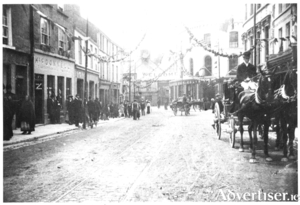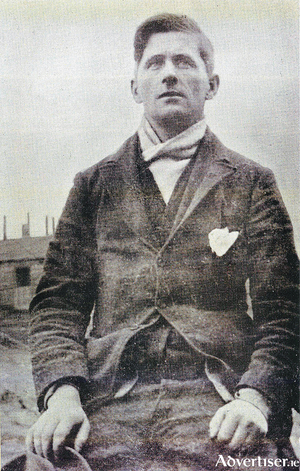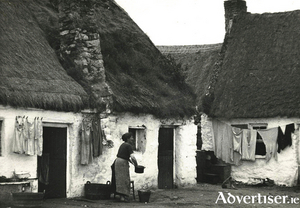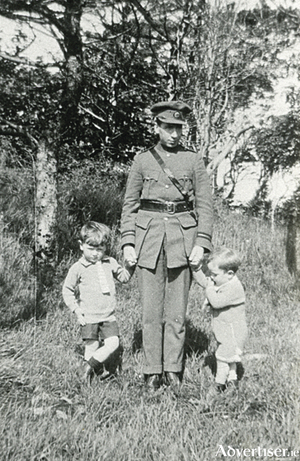Search Results for 'Eoin McNeill'
9 results found.
MacDonnells of Williamsgate Street

In 1904, MJ MacDonnell, Confectioner, announced the fact in the local papers, that he had just opened a TEA ROOM at Number 8, Wiilliamsgate Street where ladies and gentlemen ‘can have freshly made tea and cakes – all cakes made freshly on the premises with the purest ingredients only. Seed, Plum, Rich Plum, Madeira, Citron, Cherry, Sultana, Genoese, Pastry etc. White and Brown scones, Cream scones and Crumpets always in stock. Ice Creams in 24 hours’.
The Town Hall, a brief history

In 1639, the Corporation ordered that some of the shops and buildings adjacent to the market be pulled down and “all the same be reduced into a strong sufficient stone house, covered with slate and to be underpropped with good stone pillars, whereby way through it shall be to the said church”. The proposed building was to be opposite the present Anthony Ryan’s shop and was to be a Tholsel or premises for the town clerk, for the Corporation records and for meetings of the Common Council.
Liam Ó Briain, Irish rebel

Liam Ó Briain was born in Dublin in 1888. In 1916 he helped print the Proclamation and he served with Michael Mallin in the College of Surgeons during the Rising. He was subsequently interned in Wandsworth Prison and in Frongoch. In 1917 he was appointed professor of romance languages in UCG. He was jailed in Belfast in 1919/20. When he returned to Galway he was appointed as a judge in the Republican Courts In late 1920, he was having dinner in college when he was arrested by the Black and Tans, and jailed for 13 months in Galway and the Curragh. Some of his experiences in prison are vividly described in a recently published book.
Irish classes for adults and children on Inis Meáin
Coláiste Gaeilge Inis Meáin is enrolling Irish language students, both children and adults, this summer.
Learn Irish in Inis Meáin this summer
Coláiste Gaeilge Inis Meáin is enrolling Irish language students, both children and adults, this summer.
The Galway Volunteers

Just a few weeks after the Irish Volunteers were formed in Dublin, a meeting was set up in the Town Hall on December 12th, 1913 to establish a Volunteer force in Galway. There was a lot of excitement and expectation as Eoin McNeill, Roger Casement and Pádraic Pearse told the packed hall that their main objective was to win Home Rule but the movement was also formed to protect them from the Ulster Volunteers. The meeting, which was chaired by George Nicholls, was a major success and some 600 men joined up that evening.
Wash day in The Claddagh

“With its old houses — straw for their roofs and rock and mortar for their walls, and every little end of a wall whitewashed a hundred times in blue or white or thin pink — the Claddagh was lovely, and from a distance it did the eye good. It was quaint, of course, but also a home-like little village; it had sand for its walks and a turfy marlish stuff for its floors, and always curls of smoke from its square low chimneys.
George Nicholls, Rising organiser and volunteer
George Nicholls was a young solicitor who worked in G.C. Conroy’s office in Francis Street. In 1912, he set up a pipe band known as “Cumann Píobairí naGaillimhe”, the only band with an Irish language name to play at O’Donovan Rossa’s funeral to which they travelled in the company of Padraic Pearse.
Mícheál Ó Droighneáin, 1916 veteran

Mícheál Ó Droighneáin was born in Spiddal. He left school when he was 14 and got a job in McCambridge’s for 6d a week. Lady Killanin convinced him to go back to school and he became a monitor, went on to training college in Dublin, and it was there he became a Nationalist. “I became a member of the IRB towards the end of 1910 when I was teaching in Dublin [from August 1910 to January 1913]. Then I came to my native place, teaching in Spiddal for one year and then coming to Furbo.”

